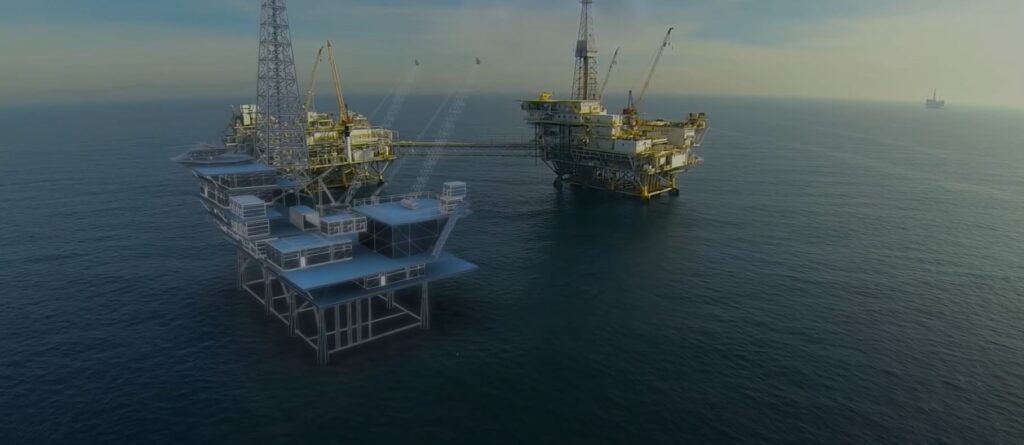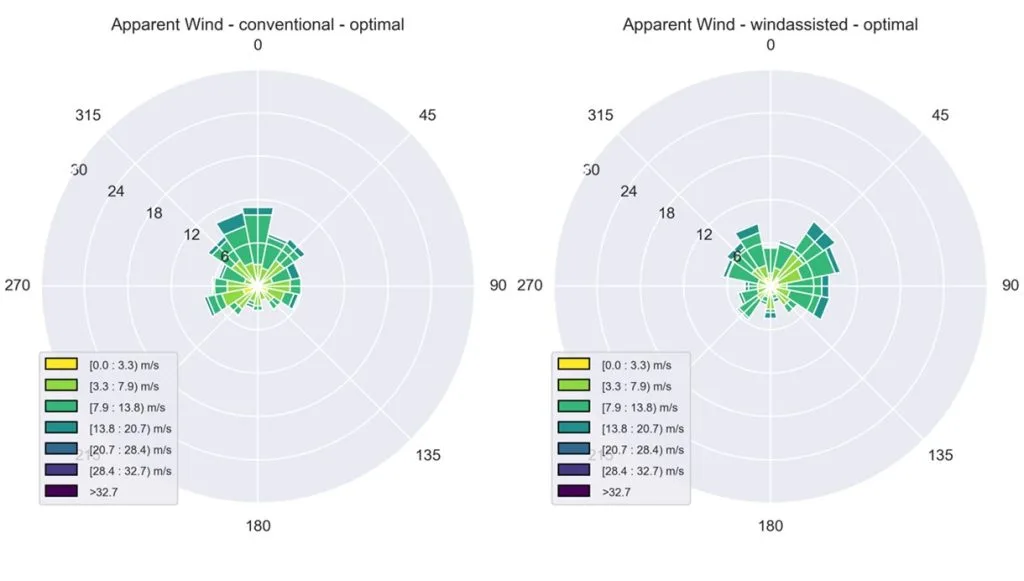28 November 2024
Rotor Sails & Voyage Optimization cut up to 28% CO2 reduction

A joint simulation project among NAPA, Norsepower, and Sumitomo analyzes the benefits of combining wind propulsion rotor sails with voyage optimization to deliver maximum emissions reduction potential.
Table of Contents
Concept
NAPA, a maritime software and data services expert, Norsepower, the global provider of auxiliary wind propulsion systems, and Sumitomo Heavy Industries Marine & Engineering Co., Ltd. (SHI-ME), one of the world’s leading shipyards, have today announced the results of phase one of their joint simulation project looking at the fuel saving and emissions reduction potential of combining Norsepower Rotor SailTM and NAPA Voyage Optimization onboard SHI-ME’s wind propulsion ship.
Phase 1
Phase one of the simulation project (from December 2022 to March 2023) found that the combination of NAPA Voyage Optimization with the Norsepower Rotor SailTM can deliver emissions reductions of 28%, on average, on the Atlantic route between New York and Amsterdam. Of these average CO2 emissions savings, the contribution of NAPA Voyage Optimization can be estimated at 12%.
The joint simulation project leveraged insights from NAPA’s ship performance model and its voyage simulation tools, as well as Norsepower’s actual performance data. Using nowcast weather data from 2022 and specifications provided by Norsepower and SHI-ME, the digital twins developed by NAPA were able to simulate the performance of the tankers in selected sea areas.

What is the Digital Twin Technology?
Digital Twin Technology: Definition, Misconceptions, Applications, and Challenges arising as such innovative concepts evolve.
Ship Nerd
Focusing on the annual voyages of six popular trading routes, the study evaluated the tankers’ estimated CO2 reduction and potential fuel saving with NAPA Voyage Optimization and Norsepower Rotor SailTM and compared these with using only NAPA Voyage Optimization. Looking at results across all six routes, the study found an average CO2 reduction of 19% when using NAPA Voyage Optimization alongside Norsepower Rotor SailTM, with NAPA Voyage Optimization contributing 10% of these emissions reductions. Using insights from the simulation, the study also explored how to predict vessel performance at the design stage, testing how the ship could handle varying sea and weather conditions.

Phase 2
Phase two of the research project (May 2023 onwards) is designed to build on phase one and enhance the performance of vessels with Norsepower Rotor SailTM. Using fleet data, the study will conduct advanced performance analysis to improve operational performance and explore new optimization strategies. The project is part of SHI-ME’s plan to develop a new proof of concept for wind-assisted ships, which will be equipped with Norsepower Rotor SailsTM.
The project and its findings will help strengthen the business case for investing in wind-assist technology at a time when the industry is under increasing pressure to decarbonize. The collaborative study brings critical insight and assurance to inform commercial and operational decisions as early as the design stage.
Rotor Sails & Voyage Optimization Views
“This joint simulation project shows the significant potential for combining wind propulsion with voyage optimization for planet-positive impact. At a time when the industry is racing to comply with environmental regulations, digital solutions are enabling greater collaboration with stakeholders across the maritime value chain. This joint simulation project was no different. Our findings are promising and can help bring much-needed clarity to help the industry meet its sustainability goals.”
Pekka Pakkanen, Executive Vice President, NAPA Shipping Solutions
“At a time of growing international regulatory and public pressure to save fuel and reduce the industry’s environmental impact, this performance data on the benefits of adopting clean technologies will give the industry the necessary confidence to invest in decarbonization. ”
Jukka Kuuskoski, CSO, Norsepower
“SHI-ME’s vision is to deliver innovative and state-of-the-art vessels for shipping’s decarbonization. The Norsepower Rotor SailTM, NAPA’s knowledge of weather routing and SHI-ME’s expertise in tall-ship design are all vital pieces to materialize the vision of a greener industry. Looking at the findings from this study, we think the CO2 emissions reduction figures exceed customers’ expectations.”
Yuji Arai, Senior Engineer, Sumitomo Heavy Industries Marine & Engineering Co., Ltd. (SHI-ME)

Source: NAPA
See Also
Maritime businesses rely on trusted information at the right time. It’s crucial for pre-fixture analysis, charter party claims, route optimization, CII reporting, benchmarking against industry performance, and many other activities. Thousands of dollars may be lost on every voyage if the optimization relies on an inferior vessel performance model.

5 mistakes to avoid when assessing vessel performance models
Shipping companies need accurate and reliable vessel performance models to support decision-making. Learn more to avoid poor models.


